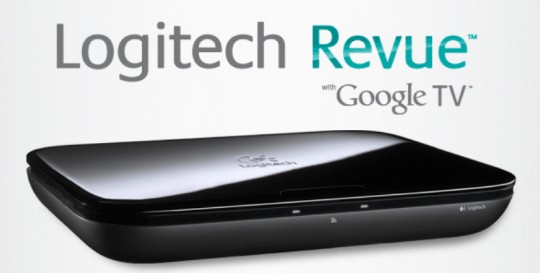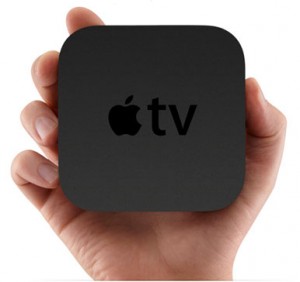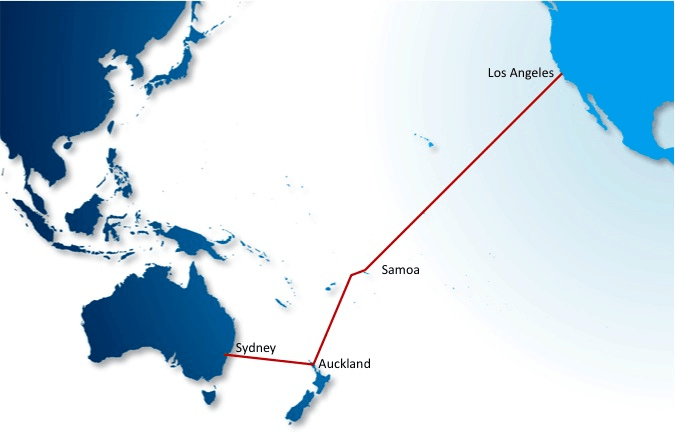When Steve Jobs throws a stone in a pond, the ripples are felt by just about everyone. One day before the unveiling of a new, slimmed-down version of Apple TV, the rest of the Internet TV industry reacted. From some came price cuts, for others a defense of their business model relying on higher-priced boxes.
First to Apple. Yesterday, Apple’s Steve Jobs unveiled the latest version of Apple TV, a product Apple has ignored for years. Jobs once dismissed the set top box as an afterthought intended for “hobbyists.” Considering the product’s enormous number of limitations, he may have been right.
The latest version of Apple TV bears little physical resemblance to the original, except for the square shape. What used to look a lot more like a Mac Mini now looks like an oversized A/B switch. The unit’s mini-me size comes with a mini-me price — $99. For that, Apple dispensed with the hard drive and turned TV watching into a streaming-only affair. HDMI remains the preferred method to connect with your television — component video connections are gone on the new version. Optical-digital output is included for audio. The new version of Apple TV also loses the coffee-warming capabilities of the original, which routinely heated up to 111 degrees.
For Netflix fans, Apple includes support for Netflix video streaming, which is the most welcome change from the dreary everything-iTunes/YouTube limitation that handcuffed the original.
The new Apple TV continues to have plenty of limitations however. There is no Gigabit Ethernet connectivity, there’s no support for 1080p, the micro-USB port is locked down preventing native support of external hard drives, and you are still stuck using iTunes for much of Apple TV’s functionality.
Apple’s control-freak mentality also remains on full display, banning you from watching Hulu or watching shows from most of Apple’s competition (Amazon, network TV websites, overseas TV streaming sites, etc.) No audio streaming from sites like Pandora is allowed, either.
[flv width=”640″ height=”500″]http://www.phillipdampier.com/video/Bloomberg Coverage of Apple TV 9-1-10.flv[/flv]
Bloomberg News delivered extensive coverage of Apple’s latest product announcements, with many taking a positive tone about their impact. Several reports are included covering every angle. (20 minutes)
Current Apple TV owners cannot benefit from the software upgrades that are a part of the new Apple TV. The two products are not compatible. That probably won’t bother many current Apple TV owners who long abandoned Apple’s awful software, jailbreaking their units and installing XBMC, Boxee, or atvusb-creator. All of these remain superior even to Apple TV’s newest software because they offer owners the opportunity to stream virtually any content from any source.
In fact, Boxee’s developers were relieved after watching Steve Jobs unveil Apple TV 2.0. Boxee will release its own set top box in November for $199. They defended Boxee’s $100-more price point on their blog, noting that Boxee will offer a completely open viewing experience, and delivers a more compelling set of features than Apple TV will offer:
We think people want to be able to watch anything that they can watch on their computer, only on their big screen TV. There is an overwhelming consumer expectation that the content we can consume in our cubicles, our dorm rooms, and in our laps should be available in our living rooms, in full 1080p with a gorgeous interface. It’s a simple premise, but the challenge is to do it in a way that makes sense in that space, so you can put your feet up, grab a remote and start watching. No keyboards, mice, windows or labyrinthine menus. It should be calm and it should be beautiful. And it *must* be open.
We all watched the Apple announcement. We walked away feeling strongly confident about the space it left for Boxee to compete. We have a different view of what users want in their living rooms. We are taking different paths to get there. The Boxee Box is going to be $100 more expensive than the Apple TV, but will give you the freedom to watch what you want.
Those investing $99 in the new Apple TV might have a shot of getting the best of both worlds. It’s a safe bet Boxee’s creators will be working on a version of their software to replace what comes with Apple TV, potentially providing a Boxee experience at an Apple TV price.
For those counting every penny these days, the arrival of Apple TV’s budget-minded update forced some companies to start cutting prices. Roku, which has been around since 2008, was the first player to officially support Netflix video streaming. Today, most Roku owners use their boxes for that purpose, but because Roku is also an open platform, anyone can create “channels” for the box to open up new viewing possibilities. As a result, Roku has come a long way from its days as the “Netflix Video Player.”
Now it’s $20-30 cheaper, too.
Coinciding with the launch of Apple TV, Roku cut prices on its three boxes:
- The standard-definition Roku SD is now $59.99 (down $20), but currently out of stock.
- The popular Roku HD is $69.99 (down $30).
- The Roku HD-XR, which adds Wireless-N capability and will support 1080p video after a firmware upgrade due later this year is now $99.99 (down $30).
Roku is running a promotion with Netflix that includes 50GB free on MP3tunes.com for a year to stream your iTunes music to your television if you buy any Roku HD player through this promotional link: www.roku.com/GetOne
 Of course, still looming in the background is Google TV, due this fall on some new Sony TVs and Blu-ray players and the Dish Network satellite TV service. Logitech is also bringing out its own standalone set-top box version — the Logitech Revue.
Of course, still looming in the background is Google TV, due this fall on some new Sony TVs and Blu-ray players and the Dish Network satellite TV service. Logitech is also bringing out its own standalone set-top box version — the Logitech Revue.
Although pricing for both Google TV and the Logitech Revue have not been announced, analyst Andy Hargreaves of Pacific Crest Securities thinks the Revue will cost between $250 and $300, which he believes is more than consumers would spend. “It’s a cool concept, but a tough sell,” he told USA Today.
Logitech is banking a lot on its new Revue box, as Logitech’s core business selling replacement computer mice and keyboards continues to falter — from $2.3 billion in 2007 to $1.9 billion in 2009. As consumers replace $1,000 desktops with $400 laptops or web-ready smartphones, many aren’t interested in splurging for top of the line accessories Logitech includes in its product line, and webcams are already built-in to many laptops and phones.
Many more don’t want another box on their TV set.
James McQuivey, an analyst with Forrester Research likes the concept of Google TV, but believes it will succeed best if it’s already built-in to television sets or DVD players.
“It will change TV viewing forever,” he told the newspaper. “[But] you’d have to be a very technically oriented and TV-obsessed person to go through the pain of an additional box.”
[flv width=”640″ height=”500″]http://www.phillipdampier.com/video/Google TV and Logitech Revue.flv[/flv]
An introduction to Google TV and three amusing ads from Logitech for the Revue: TV Misses You. (6 minutes)
[flv width=”640″ height=”500″]http://www.phillipdampier.com/video/KGPE Frenso KWGN Denver New Apple Products 9-1-10.flv[/flv]
Apple’s other new products, including their iPod line, was covered by KGPE-TV in Fresno and KWGN-TV in Denver. (5 minutes)


 Subscribe
Subscribe












